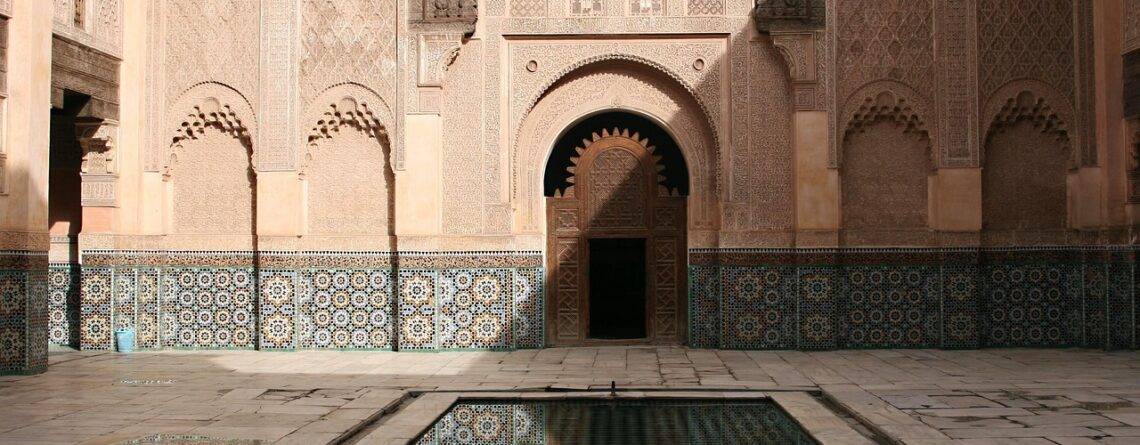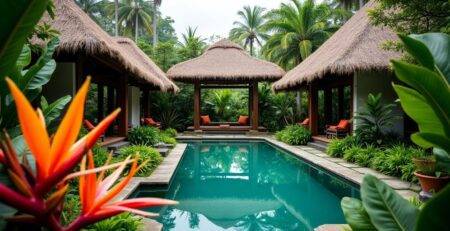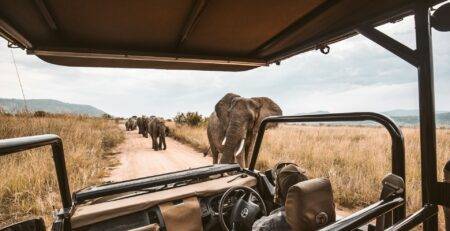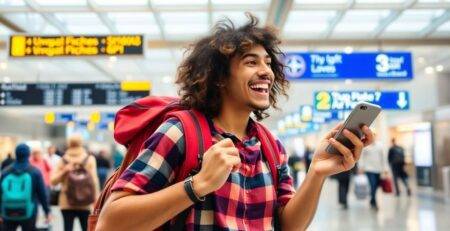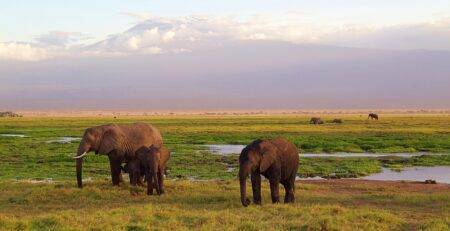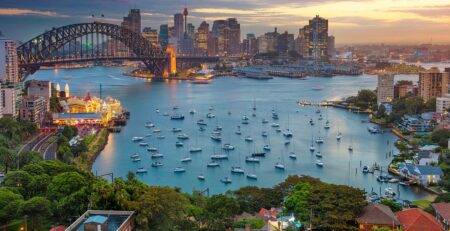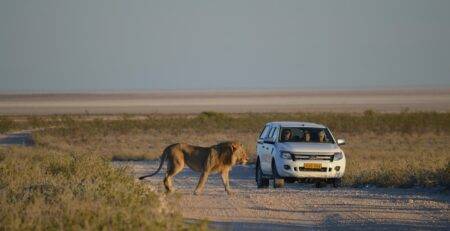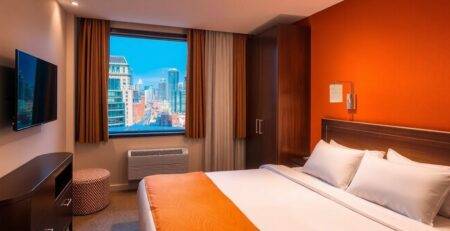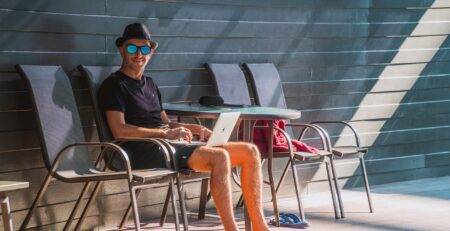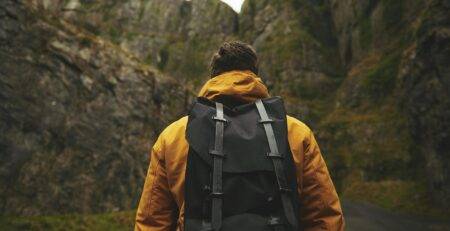Hey there! I’m putting together this solo travel Morocco guide because, let’s be real, planning a trip to a place like Morocco can feel like a lot. Especially for your first time, and even more so if you’re going it alone. I want to help you get everything sorted out before you even step foot on a plane. That way, once you’re there, you can just soak it all in, enjoy the amazing culture, and not worry about the little things. Trust me, it makes a huge difference.
Key Takeaways
- Visas are usually not needed for short stays if you’re from the US, Canada, Australia, or the UK, but always double-check passport validity and make sure you have a blank page.
- For solo female travelers, consider dressing modestly and try not to walk alone at night; it just makes things feel safer.
- Budget around $55 USD per day for basic costs like food and local transport, but remember this doesn’t include big purchases or flights.
- Trains and buses are your most budget-friendly options for getting between cities, though private cars are available if you’re willing to spend more.
- Always download offline maps before you go, especially for the winding medinas, and be clear with any guides about what you want to see to avoid unwanted shopping stops.
Essential Pre-Trip Planning for Solo Travelers

Planning a solo trip to Morocco? Awesome! But before you even think about tagines and souks, there are a few key things to sort out. I always find that getting the pre-trip stuff nailed down early makes the whole experience way less stressful.
Visa and Passport Requirements
First things first: paperwork. Make sure your passport is valid for at least six months beyond your planned stay. I can’t stress this enough – some countries are super strict about this, and Morocco is no exception. For citizens of the US, Canada, Australia, the UK, and many EU countries, you usually don’t need a visa for stays under 90 days. But always double-check the latest requirements with your embassy or consulate, just to be safe. Also, ensure you have at least one blank page in your passport. I’ve been caught out before, and it’s not fun!
Optimal Trip Duration
How long should you stay? That’s the million-dollar question! Honestly, it depends on what you want to see and do. If you’re short on time, you could squeeze in a few highlights in, say, five days. But I reckon that’s rushing it. To really soak things up, I’d recommend at least 10 days to two weeks. This gives you enough time to explore a few different cities without feeling completely frazzled. If you’re planning a longer trip, check out these Morocco itineraries for inspiration.
Best Time to Visit Morocco
Timing is everything, right? Morocco can get seriously hot, especially in the summer months (June to August). I’m talking scorching! Unless you’re a big fan of extreme heat, I’d suggest avoiding this time. Spring (April-May) and autumn (September-October) are generally considered the best times to visit. The weather is milder, making it much more pleasant to wander around the medinas and explore the desert. Plus, there are fewer crowds than in peak season. I went in late September once, and it was pretty much perfect.
I always check the average temperatures and rainfall for the cities I plan to visit. It helps me pack the right clothes and avoid any unexpected weather surprises. Plus, knowing the climate can influence my itinerary – maybe I’ll spend more time indoors during the hottest part of the day, or plan a desert trip for when the nights are cooler.
Navigating Your Solo Journey

Transportation Options Between Cities
Okay, so getting around Morocco solo can feel a little daunting at first, but trust me, it’s totally doable. I found that the train system is actually pretty reliable and comfortable for longer distances between major cities like Marrakech, Fes, and Casablanca. It’s a good idea to book your tickets a day or two in advance, especially during peak season, just to be safe.
For shorter trips, or to reach smaller towns, grand taxis (shared taxis) are the way to go. They’re super common, and a great way to experience local life. Just be sure to agree on the price before you hop in! Buses are also an option, often cheaper than trains, but they can be a bit more crowded and less punctual. I personally preferred the trains when possible for the comfort factor.
Effective Navigation Strategies
Getting lost in the medinas is practically a rite of passage in Morocco! Seriously, though, it can be a bit overwhelming. My best advice? Download an offline map app like Maps.me before you go. It was a lifesaver for me, especially in the maze-like streets of Fes.
Don’t be afraid to ask for directions, but be aware that some people might expect a small tip for their help. A few dirhams is usually enough. Learning a few basic Arabic phrases like “Shoukran” (thank you) and “La, shukran” (no, thank you) can also go a long way. And remember, sometimes the best way to navigate is to simply wander and see where you end up!
Staying Healthy on Your Trip
Staying healthy is important, especially when you’re traveling solo. I made sure to only drink bottled water, and I avoided ice in my drinks just to be extra cautious. Food-wise, I mostly ate at restaurants that seemed popular with locals, which usually meant the food was fresh and tasty.
It’s also a good idea to pack a small first-aid kit with essentials like pain relievers, antiseptic wipes, and any medications you might need. And don’t forget sunscreen! The Moroccan sun can be intense, even in the cooler months. I also recommend getting travel insurance that covers medical expenses, just in case. Better safe than sorry!
I found that taking it easy on my first few days helped me adjust to the new environment and avoid getting sick. Listen to your body, and don’t be afraid to take a break when you need it.
Budgeting for Your Solo Adventure

Planning a solo trip to Morocco? One of the first things on my mind is always: How much is this actually going to cost me? It’s super important to get a handle on your finances before you even book that plane ticket. Here’s what I’ve learned about budgeting for a solo adventure in Morocco.
Daily Spending Estimates
Okay, so how much should you expect to shell out each day? Well, it really depends on your travel style. Are you all about those fancy riads and private tours, or are you more of a budget backpacker? I tend to fall somewhere in the middle. I’ve found that a reasonable daily budget, excluding accommodation, flights, and major shopping sprees (like buying a rug), is around $50-$75 USD. This covers food, transportation within cities, entrance fees, and maybe a small souvenir or two. Of course, you can definitely do it for less if you’re eating street food and taking local buses. Or, you can spend way more if you’re dining at upscale restaurants and hiring private drivers.
To give you a clearer idea, here’s a rough breakdown:
- Budget Traveler: $30-$50 USD (hostels, street food, local buses)
- Mid-Range Traveler: $50-$75 USD (riad, mix of local and tourist restaurants, taxis)
- Luxury Traveler: $100+ USD (high-end hotels, fine dining, private transportation)
Managing Money and ATMs
Cash is king in Morocco. While some larger hotels and restaurants in tourist areas might accept credit cards, most places, especially in the medinas, operate on a cash-only basis. So, it’s a good idea to have a decent amount of Moroccan Dirhams (MAD) on hand. I usually exchange some money at the airport when I arrive, just enough to get me started. Then, I use ATMs to withdraw more as needed. Make sure to check with your bank about international transaction fees before you go. I also always inform my bank of my travel dates to avoid any holds on my card. Charles Schwab is a good option, as they reimburse ATM fees worldwide.
It’s also wise to carry a small amount of US dollars or Euros as a backup, just in case you run into any issues with ATMs or card acceptance. Keep your money in a secure place, like a money belt or a hidden pocket.
Accommodation Choices
Where you stay can have a huge impact on your budget. Hostels are the cheapest option, usually costing around $10-$20 USD per night. Riads, traditional Moroccan houses with interior courtyards, offer a more authentic experience and can range from $30-$150+ USD per night, depending on the level of luxury. Hotels are also available, with prices varying widely. I personally love staying in riads because they offer a unique cultural experience and often include breakfast. Airbnb is another great option, with some amazing riads listed for under $100 per night. I always read reviews carefully before booking any accommodation.
If you’re looking for budget beach vacations or the best cheap beach destinations, consider towns like Taghazout. While not as well-known as some other Moroccan destinations, it offers affordable coastal getaways 2025 style. Keep an eye out for low-cost beach travel spots and plan your beach holidays on a budget accordingly. You might find that smaller coastal towns offer better deals on accommodation and food than larger cities like Casablanca or Agadir.
Safety and Cultural Awareness for Solo Women

Traveling solo as a woman in Morocco definitely requires some extra thought and preparation. I want to share my experiences and tips to help you feel confident and secure during your adventure. It’s all about being informed, aware, and trusting your gut.
Personal Safety Considerations
My number one rule is to always trust my instincts. If a situation feels off, I remove myself immediately. I avoid walking alone at night, especially in poorly lit areas. I also make sure to let someone know my plans, whether it’s a hotel staff member or a friend back home. Sharing my itinerary and checking in regularly gives me peace of mind. I also carry a personal alarm, just in case. It’s small, but it can make a big difference. I also avoid drawing unnecessary attention to myself by keeping valuables out of sight and being mindful of my surroundings. Remember, personal safety is paramount.
Avoiding Common Scams
Unfortunately, scams are something to be aware of in touristy areas. I’ve learned to be wary of overly friendly locals offering unsolicited help or tours. Often, these
Packing Essentials for Your Moroccan Trip
Packing for Morocco requires some thought, especially if you’re traveling solo. I’ve learned that being prepared can make or break your trip. It’s not just about throwing clothes in a bag; it’s about packing smart for the culture, climate, and activities I plan to do.
Clothing for Cultural Respect
As a solo female traveler, I find it’s best to err on the side of modesty. This doesn’t mean I need to completely change my style, but it does mean being mindful of local customs. I usually pack:
- Loose-fitting clothing: Think maxi dresses, long skirts, and linen pants. These are comfortable in the heat and provide coverage.
- Lightweight tops: I prefer shirts that cover my shoulders. Breathable fabrics are a must.
- A scarf or shawl: This is incredibly versatile. I use it to cover my head when visiting religious sites, as an extra layer on cooler evenings, or even as a beach cover-up.
Dressing respectfully is not only about adhering to cultural norms but also about feeling more comfortable and confident as I explore. It helps me avoid unwanted attention and shows that I’m making an effort to understand and appreciate the local culture. I always make sure to have modest clothing options available.
Footwear Recommendations
Footwear is crucial, especially since I do a lot of walking. I always bring:
- Comfortable walking shoes: I cannot stress this enough. I usually bring a pair of broken-in sneakers or walking sandals.
- Sandals or flip-flops: These are great for relaxing at my riad or for quick trips to the hammam.
- Closed-toe shoes: If I plan on doing any desert excursions or hiking, closed-toe shoes are a must to protect my feet.
Health and Comfort Items
Beyond clothing and shoes, there are a few health and comfort items I never leave home without:
- Sunscreen: The Moroccan sun can be intense, even in the cooler months. I always pack a high SPF sunscreen.
- Insect repellent: Especially important if I’m visiting during the warmer months or spending time in rural areas.
- A basic first-aid kit: This includes essentials like pain relievers, antiseptic wipes, and bandages. I also bring any personal medications I need.
- Hand sanitizer: This is a must for staying clean on the go, especially when I’m eating at street food stalls or using public transportation.
Immersing Yourself in Moroccan Culture

Language and Communication Tips
Okay, so Arabic is the main language, obviously. But don’t freak out! In touristy spots, especially Marrakech, a lot of people speak English. French is super common too, especially in the north, and Spanish pops up as well. I found that even just attempting a few basic Arabic phrases went a long way. People really appreciate the effort. Download Google Translate before you go.
it’s a lifesaver if you get stuck. I wish I had spent more time learning Arabic phrases before my trip. It would have made interactions so much smoother. Knowing how to say “hello” (salam alaikum) and “thank you” (shukran) is a great start. Don’t be afraid to try, even if you butcher the pronunciation; Moroccans are generally very patient and encouraging. Also, remember that communication isn’t just verbal; a smile and a friendly gesture can bridge many gaps. Consider investing in a phrasebook or language learning app to enhance your communication skills before you arrive.
Etiquette for Photography
This is a big one. Always, always ask before taking someone’s photo. Some people might be cool with it, some might ask for a few dirhams (the Moroccan currency) in exchange, and some will flat-out refuse. If you get the finger wag, respect it. Seriously, just put the camera away. It’s about respecting their culture and personal space. I saw a few tourists being really rude about this, and it’s just not cool. Also, be mindful of photographing religious sites or government buildings.
There might be restrictions. When in doubt, err on the side of caution and ask permission. It’s better to miss a photo op than to offend someone. Remember, you’re a guest in their country. I always try to engage with people first, maybe have a short conversation, before even thinking about taking a picture. It makes the whole experience more authentic and respectful. Be aware of cultural sensitivities when capturing travel memories.
Shopping and Haggling
Haggling is part of the fun! It’s expected in the souks (markets), so don’t be shy. Start low, but be reasonable. It’s not about ripping people off; it’s about finding a fair price. I usually aim for about a third to half of the initial asking price, but it depends on the item and the vendor. Be polite and friendly, even if you’re driving a hard bargain. A smile and a sense of humor can go a long way.
Fridays are holy days, so many shops will be closed. Don’t plan your serious shopping for then. Also, be aware of scams. Some vendors might try to inflate prices or sell you fake goods. Do your research and know what things are worth. I found that having a general idea of prices beforehand helped me avoid getting ripped off. And remember, it’s okay to walk away if you’re not happy with the price. There are plenty of other shops to choose from. I once spent an hour haggling over a rug, only to walk away in the end. I found a similar one for a better price at another shop the next day. Don’t be afraid to shop around.
Remember that Moroccans value relationships. Building rapport with vendors can lead to better deals and a more enjoyable shopping experience. Engage in conversation, ask about their products, and show genuine interest in their craft. This approach often yields better results than simply focusing on price alone.
Exploring Morocco’s Diverse Landscapes
Morocco isn’t just about bustling cities and ancient medinas; it’s a country of incredible geographic diversity. From the towering Atlas Mountains to the vast Sahara Desert and the rugged Atlantic coastline, there’s something for every type of traveler. I found myself constantly amazed by the sheer variety of landscapes packed into one nation. Planning my itinerary around experiencing these different environments was key to making my trip unforgettable.
Must-Visit Cities and Regions
When I started planning, I knew I wanted to see more than just Marrakech. Each city has its own unique vibe and architectural style. Here are a few that stood out:
- Chefchaouen: The blue city is a photographer’s dream. Wandering through its winding alleys felt like stepping into a different world.
- Fes: The cultural heart of Morocco, with its sprawling medina and ancient traditions. Getting lost in the souks is practically a rite of passage.
- Essaouira: A charming coastal town with a relaxed atmosphere and strong winds, perfect for windsurfing. The seafood is also incredible.
- The Draa Valley: A long, lush oasis dotted with kasbahs and palm groves. It’s a great place to experience rural Moroccan life.
Desert Adventures
No trip to Morocco is complete without venturing into the Sahara. I opted for a camel trek into the Erg Chebbi dunes near Merzouga, and it was an experience I’ll never forget.
- Riding a camel across the sand as the sun set was surreal.
- Spending the night in a Berber camp under the stars was magical.
- Waking up to the sunrise over the dunes was breathtaking.
Just be prepared for the heat and the sand! Bring plenty of water, sunscreen, and a scarf to protect your face.
Coastal Escapes
Morocco’s Atlantic coast offers a welcome respite from the heat and hustle of the cities. I spent a few days exploring the coastline, and it was a great way to relax and recharge. Some highlights include:
- Essaouira: As mentioned before, this is a great spot for windsurfing and enjoying fresh seafood.
- Taghazout: A surfer’s paradise with consistent waves and a laid-back atmosphere. Even if you don’t surf, it’s a great place to chill on the beach.
- Oualidia: Known for its oyster farms and calm lagoon, perfect for swimming and kayaking.
Exploring Morocco’s diverse landscapes was definitely a highlight of my solo trip. I highly recommend venturing beyond the major cities to experience the country’s natural beauty. You won’t be disappointed!
Wrapping Things Up
So, there you have it. My hope is that this guide helps you feel a bit more ready for your first solo trip to Morocco. It’s a place that really sticks with you, full of amazing sights and sounds. I know it can seem like a lot to plan, but honestly, a little bit of preparation goes a long way. Once you’re there, you’ll be so glad you made the effort. Just remember to be open to new things, stay aware of your surroundings, and enjoy every moment. I promise, it’s an experience you won’t forget.
Frequently Asked Questions
Is it safe for a woman to travel alone in Morocco?
I’ve heard so many different stories about safety for women traveling alone in Morocco. Some women had a terrible time, while others loved it. For me, traveling with a friend, I felt pretty safe most of the time. We tried to be respectful by covering up and didn’t walk around the old city at night, especially not super late. I didn’t have any bad experiences myself, but I think it’s smart to be careful, especially if you’re by yourself. It’s really about what makes you feel comfortable.
What are the visa and passport rules for Morocco?
You don’t usually need a visa if you’re from the U.S., Canada, Australia, the UK, or most EU countries, as long as you’re staying for less than 90 days. Just make sure your passport is valid for at least six months past your planned exit date and has at least one blank page for stamps. Right now, you don’t need any special shots.
How much time should I plan for my trip to Morocco?
The longer you can stay, the more you’ll see and experience. If you’re short on time, try to give yourself at least two full days in each city you want to visit. Remember to add extra time for travel between cities, because some of the popular spots are quite far apart. My friend and I squeezed in Marrakech, Fes, and Chefchaouen in five full days, plus two half days, but it was really rushed. I wouldn’t suggest doing that much in such a short time, but it is possible!
What’s the best way to get around Morocco?
Getting around Morocco can be done in a few ways. Trains and buses are the cheapest options if you’re going between cities. For example, a train from Marrakech to Fes takes about eight hours. You can also hire a private car, which can be pretty affordable if you’re splitting the cost with a group. Just know that some places, like Fes to Chefchaouen, don’t have train service, so you’ll need a bus or car.
How much money should I budget for a solo trip to Morocco?
I found that I spent about $55 USD a day on basic things like food, coffee, taxis, and entry fees to attractions. This doesn’t include my flights, where I stayed, or any big purchases like a Moroccan rug. You can find nice meals for around $20 USD, but I also had some great meals for under $8. Many places only take cash, so it’s a good idea to get some local money when you can. I always let my credit card company know I’m traveling and use a bank that refunds ATM fees.
What kind of clothes should I pack for Morocco?
As a woman, it’s a good idea to pack clothes that let you cover your shoulders and knees, especially when you’re out and about. Morocco is a Muslim country, and while you’ll see some people in Marrakech wearing less, it’s respectful to dress more modestly in public. I wore lots of light, comfy pants, longer jumpsuits with a shawl, and long dresses with sleeves. It can get hot, so pick light fabrics.

